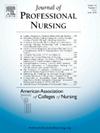执业护士计划招生趋势和预测
IF 2.8
3区 医学
Q1 NURSING
引用次数: 0
摘要
背景作为医疗保健劳动力中增长最快的部分,了解 NP 的招生情况至关重要。目的这项工作旨在指导医疗保健劳动力的前瞻性思考、学术规划和政策倡议。方法这项二手数据分析调查了 2013 年至 2022 年执业护士(NP)项目的招生趋势,包括硕士与博士招生、临床方向(急症护理、初级护理、精神心理健康)和招生状态(兼职与全职)的子分析。结果--向护理实践博士(DNP)NP 项目的可用性和采用转变。-结论从 DNP NP 项目和注册人数的增长中可以看出,博士 NP 项目注册人数的增加可能会为医疗保健劳动力带来优势。由于非全日制招生可能会延长毕业时间,因此需要在劳动力规划中予以关注。希望这些发现能为医疗保健行业带来有效的应对措施,以满足在不断变化的环境中对高质量医疗服务的需求。本文章由计算机程序翻译,如有差异,请以英文原文为准。
Nurse practitioner program enrollment trends and predictions
Background
As the fastest growing segment of the healthcare workforce, understanding NP enrollment is vital.
Purpose
This work aimed to guide healthcare workforce forethought, academic planning, and policy initiatives.
Method
This secondary data analysis investigated nurse practitioner (NP) program enrollment trends from 2013 to 2022, including sub-analyses of master's versus doctoral enrollment, clinical tracks (acute care, primary care, psychiatric mental health), and enrollment status (part-time vs. full-time). An autoregressive integrated moving average (ARIMA) projection modeling is used to forecast enrollment for four years, 2023–2026.
Results
- •A shift toward Doctor of Nursing Practice (DNP) NP program availability and adoption.
- •Part-time NP student enrollment is the preferred enrollment status across NP tracks through 2026.
- •Robust growth demonstrated and predicted in psychiatric mental health NP programs.
- •An expectation that acute care enrollment will recover post-pandemic, while primary care faces a more complex trajectory.
Conclusion
Increased enrollments in doctoral NP programs, visible in DNP NP program and enrollment growth, may offer advantages for the healthcare workforce. Part-time enrollment prevalence requires attention in workforce planning due to the potential for extended graduation timelines. These findings hopefully will lead to an effective healthcare response to meet the demand for high-quality care in a changing landscape.
求助全文
通过发布文献求助,成功后即可免费获取论文全文。
去求助
来源期刊
CiteScore
4.80
自引率
8.00%
发文量
153
审稿时长
52 days
期刊介绍:
The Journal will accept articles that focus on baccalaureate and higher degree nursing education, educational research, policy related to education, and education and practice partnerships. Reports of original work, research, reviews, insightful descriptions, and policy papers focusing on baccalaureate and graduate nursing education will be published.

 求助内容:
求助内容: 应助结果提醒方式:
应助结果提醒方式:


